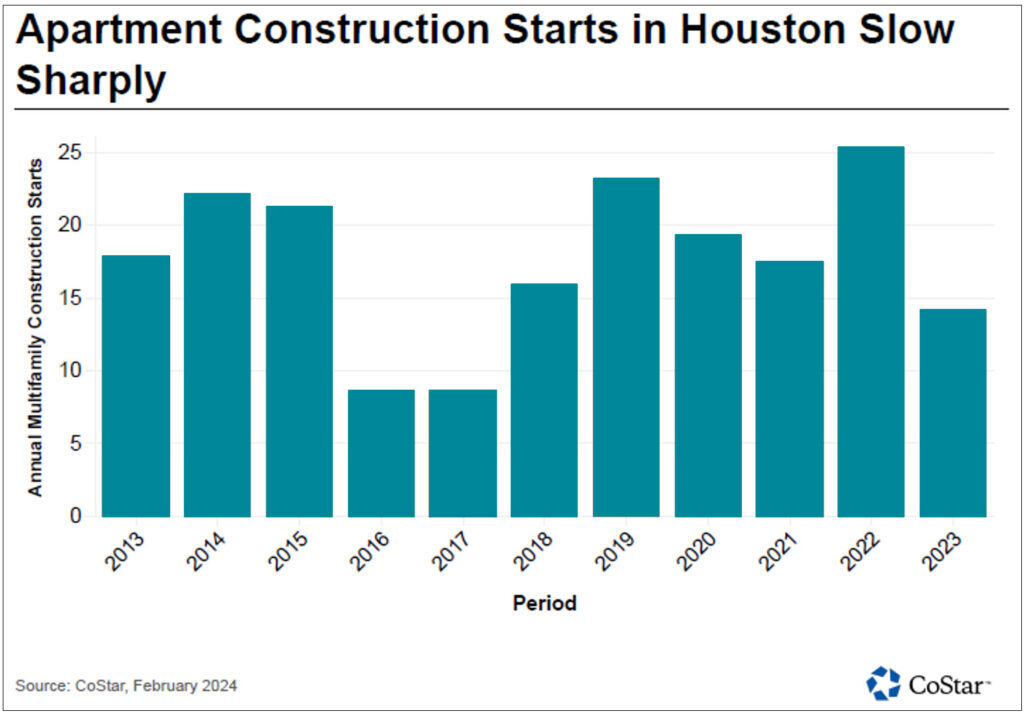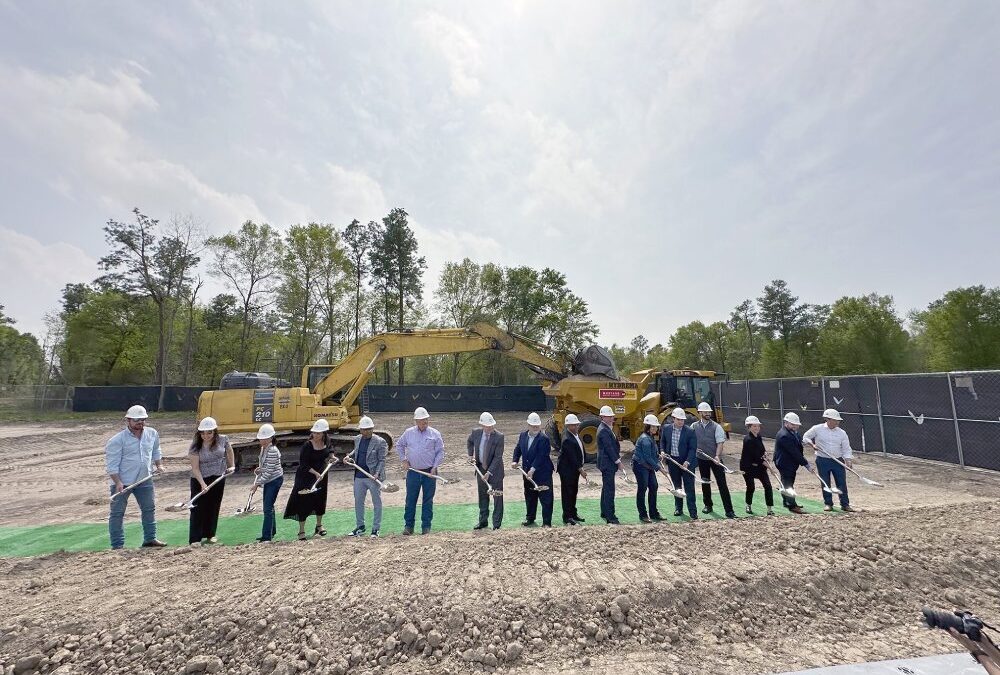This issue of Quadrants is focused on apartments in the North Houston District.
For this month’s CRE report, we thought it would be appropriate to examine the headwinds and tailwinds in the multifamily market, with a special emphasis on the North Houston District market.
Macroeconomic Factors
All multifamily markets and submarkets are impacted by macroeconomic factors in the larger US economy. The biggest among these factors, often heard about, is interest rates. As we all know, inflation spiked shortly after the worst of COVID-19 passed, and this led the Federal Reserve to embark on one of its sharpest increases in Fed Funds rates ever between 2022 and 2023. Today, the Fed Funds rate ranges from 5.25% to 5.5%. This has caused – as intended – an increase in the entire rate regime, and today (March 4th, 2024), the 10-year rate sits at 4.2%. This is a crucial financing rate in the commercial real estate world, with many loans being based on the 10-year rate. This means that those needing to refinance an existing loan are paying more to do so, dramatically impacting returns – a serious headwind to such owners/investors.
But if you do not need to refinance a loan or pay cash for your property, this has not been a headwind and, in fact, over time, may become a tailwind. How so? The dramatic run-up in interest rates has put the brakes on apartment construction starts. In fact, starts in the Houston area in 2023 were at the slowest pace since 2017, as the chart shows below. Given development timelines of 18 to 24 months, new units coming on the market will likely slow significantly over the next two to three years, ultimately putting upward pressure on rents – a tailwind for current owners.
Apartment construction starts in houston slow sharply

What does the future hold for interest rates? This much-debated topic breaks down along two general lines. The first is that rates will drop in the latter half of 2024, generally helping commercial real estate markets. The second view is that we are headed for a “higher for longer,” meaning rates may stay elevated for the short to medium term. This could be a headwind to the market. Few, however, see a return to the now abnormally low rates of the 2010s. This will force an adjustment to at least moderately higher rates than before.
Another key macroeconomic factor for the multifamily market is job creation. While Houston saw post-COVID spikes in job growth in 2021 and 2022, job growth is expected to return to more normal levels in 2024, likely in the 60,000 to 65,000 jobs-created range. This more normal yet strong job growth rate should prove a modest tailwind for future multifamily growth in Houston.
Relative to the North Houston District, these macroeconomic factors mean that the “renter-by-necessity” – Class B/C local submarket should maintain already lower vacancy rates than the market as a whole and that over time, rent growth should be positive, if only modest. With respect to transactions, for properties that did not trade at inflated values, as occurred throughout the market in 2021 and 2022, prices paid should rise modestly. Fortunately, the North Houston District market has seen a steady supply of new units added via low-income housing tax credit development, helping to replace over 800 units lost post-Hurricane Harvey to flood damage.
Summary
Overall, though there may be some fits and starts in the market as interest rates and inflation sort themselves out, the multifamily market in the North Houston District appears moderately bullish thanks to Houston’s steady job growth, a gradual near- and medium-term tightening in supply, and overall positive business climate.
Questions? Connect with us.
Robert Fiederlein
Vice President Planning and Infrastructure
Direct: 281-874-2132
Mobile: 713-816-5413
rfiederlein@www.northhouston.org

